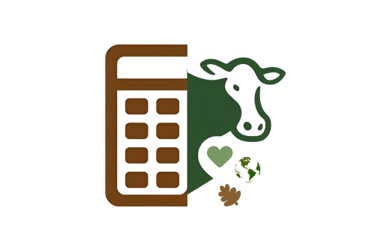

Land & Grains
If we combine pastures and cropland for animal feed, around 80% of all agricultural land is used for meat and dairy production, yet produces less than 20% of the world’s supply of calories. (Our world in data, 2021)
Research suggests that if everyone shifted to a plant-based diet, global agricultural land use could fall by about 75%. (Our world in data, 2021)
Only 48% of the world’s cereals are eaten by humans. 41% is used for animal feed and 11% for biofuels. (Our world in data, 2021)
Cattle are the most inefficient in their energy conversion, requiring 7 kg of grain to produce 1 kg of beef. (National Center of Biotechnology Information, 2002)
More than 77% of global soy is fed to livestock for meat and dairy production. Just 7% of soy is used directly for human food products such as tofu or soy milk. (Our world in data, 2021)
Emissions
On average, vegan diets produce about 0.69 kg CO₂-eq per 1,000 kcal, and vegetarian diets about 1.16, pescatarian 1.66, omnivore 2.23, paleo 2.62, and keto 2.91 diets. (González, A. D., et al.,2021)
Producing 100 grams of protein from peas emits just 0.4 kilograms of carbon dioxide equivalents (CO2eq). To get the same amount of protein from beef, emissions would be nearly 90 times higher, at 35 kgCO2eq. (Our world in data, 2020)
Emissions from plant-based foods are 10 to 50 times smaller than those from animal products. (Carbon Brief, 2020)
Deforestation
Replacing 20% of global consumption of beef and other grazing livestock with microbial proteins grown from fungus could cut annual deforestation by 50%. (The Washington Post, 2022)
Pasture expansion for cattle accounts for 41% of tropical deforestation and nearly 75% of deforestation in the Amazon. (Our world in data, 2021)
About 50% of Brazilian livestock are raised on what was once rainforest. (Business Insider, 2019)
Other
Vegan diets used 75% less land, required 54% less water, and had a 65% lower impact on environmental biodiversity than meat diets. (Forks over knives, 2023)

